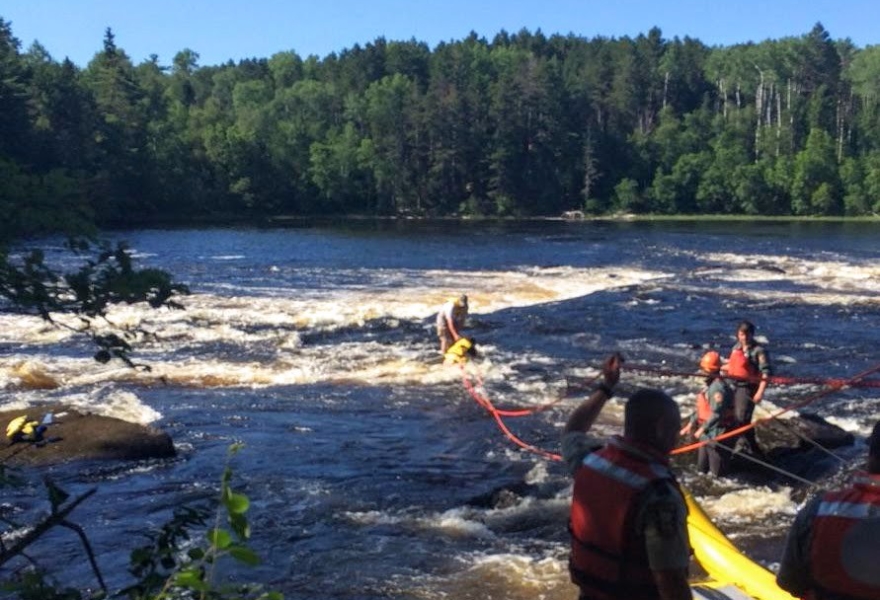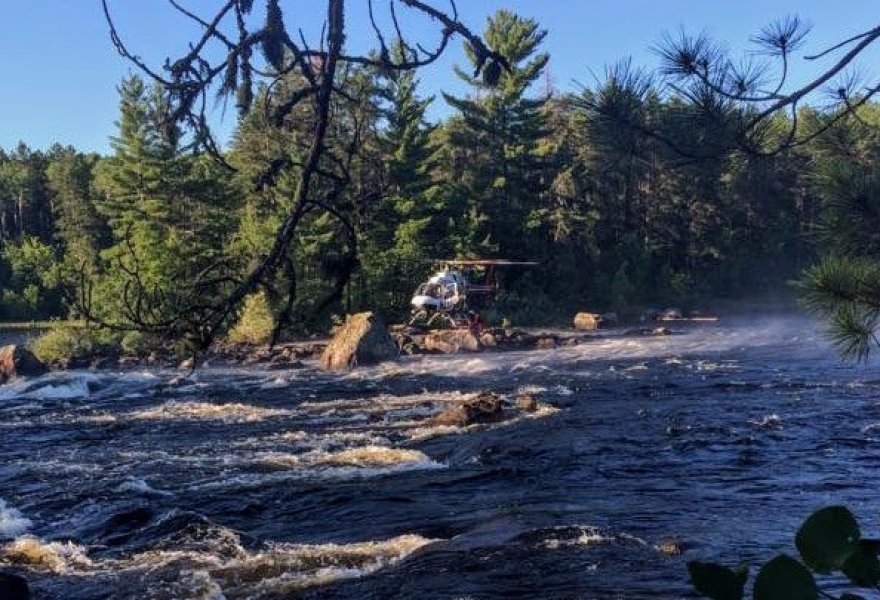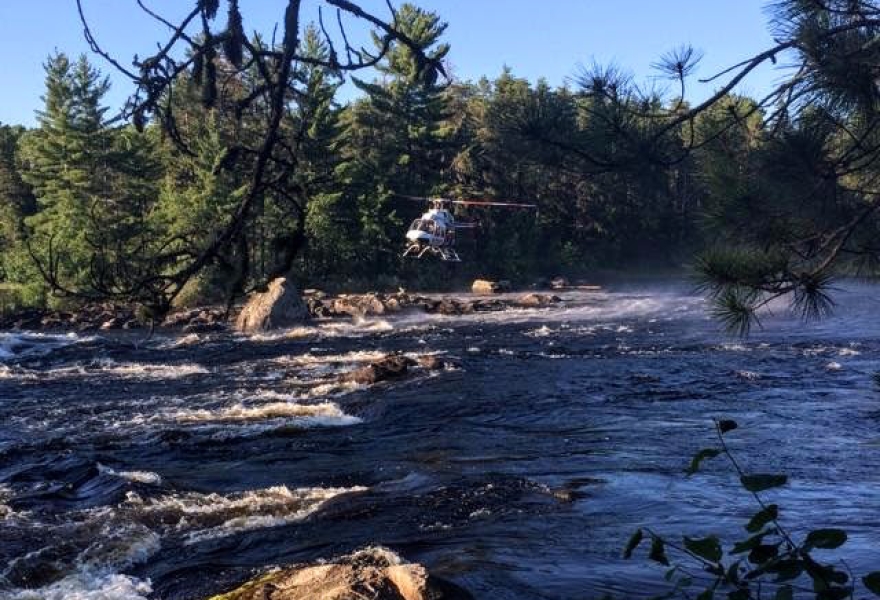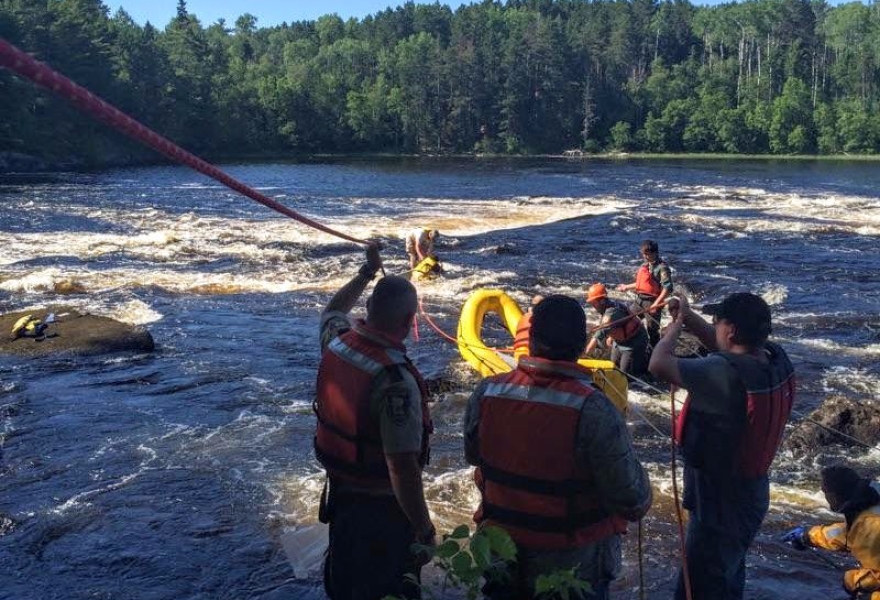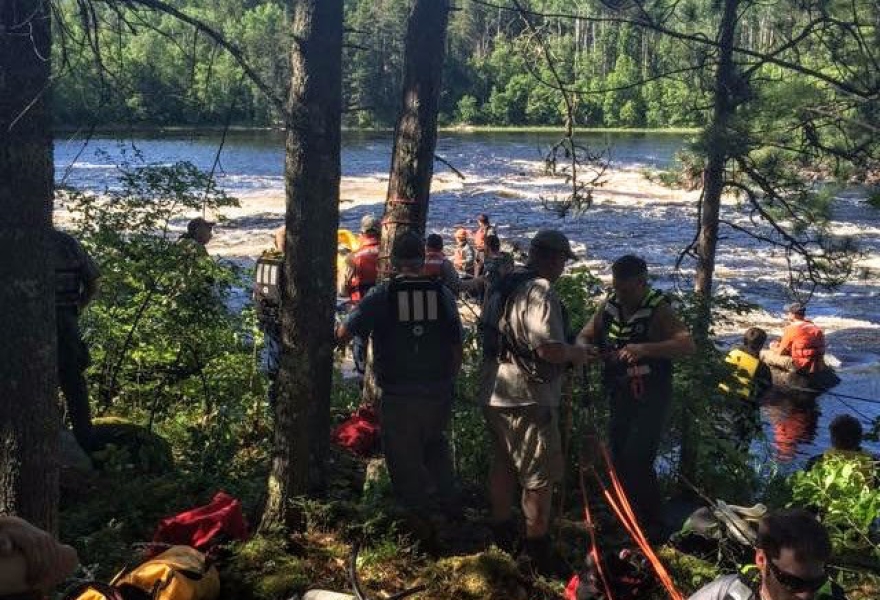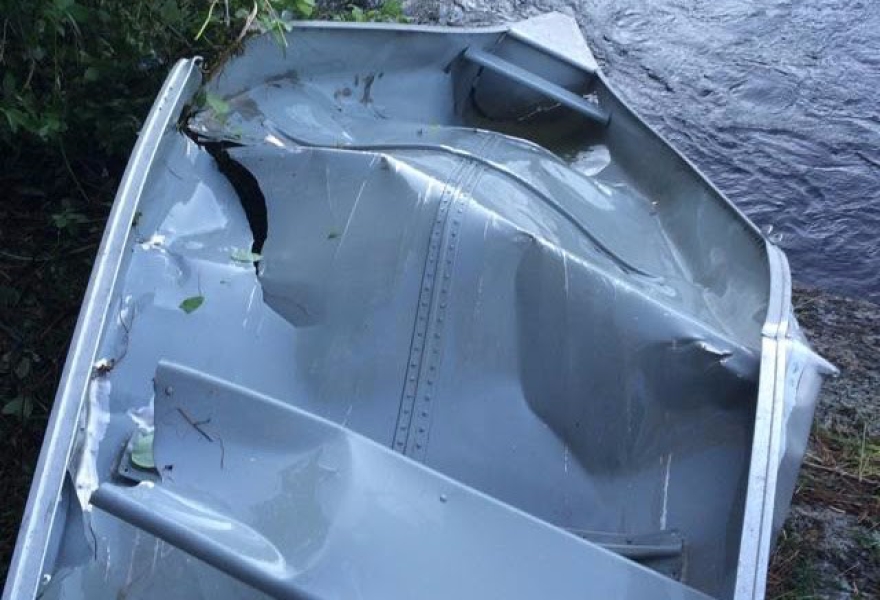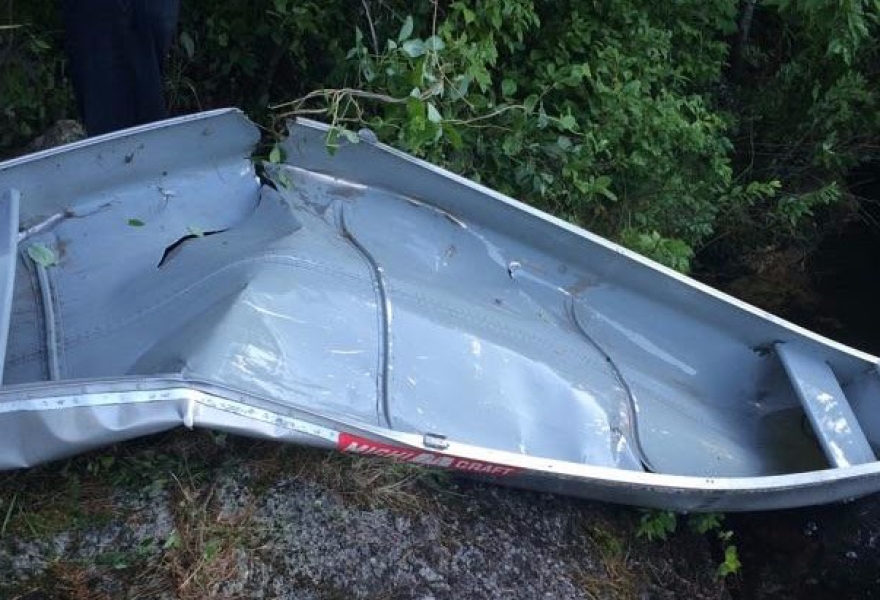All photos courtesy the St. Louis County Rescue Squad
A teenager from Rochester, Minnesota was rescued in dramatic fashion from the rushing waters of a Boundary Waters rapids on the Canada-United States border on Tuesday. The victim was trapped in the water for several hours before emergency personnel arrived and pulled him out – with injuries and hypothermia.
“Mother nature had been doing everything she could to claim him as her victim,” said first-responder Kurt Erickson of the St. Louis County Rescue Squad. The all-volunteer group was integral to the boy’s successful rescue, which involved numerous people and agencies.
About mid-morning Tuesday, a church group from Rochester and their leader from Duluth attempted to run Cable Rapids on the Basswood River, located below upper and lower Basswood Falls and just below where a cable crosses above the water. Both their canoes capsized, and four individuals escaped largely unscathed. But a teenager named Asher’s leg was trapped by his canoe, which was wrapped around a rock by the river’s powerful hydraulic forces, with his leg stuck between the rock and the hard current.
His group quickly realized it would be impossible to move the canoe and free him by themselves, so members of the party left to find help. They soon came across Boy Scouts working on a nearby portage, who radioed for rescue – setting in motion a massive and complex operation.
Erickson stressed that such rescues are possible due to true teamwork. “There is an amazing coming together of diverse groups and people that, working together as a team, success is achieved,” he said.
Tuesday’s team on the Basswood included the church group’s adult leader, who stood in the river and held him above water for hours; staff from Northern Tier High Adventure Base who radioed for help and assisted with the rescue; members of the St. Louis County Rescue Squad and the Morse Lake Fire Department, who traveled by float plane, motorboat, canoe, and portage trail before executing a high-stakes rescue in the fast-moving water; a Superior National Forest float plane crew who flew rescuers into the site and the victim back to Ely; a State Patrol helicopter crew that flew from the Twin Cities to the site to extract the injured canoeist, where two St. Paul firefighters rappelled down and airlifted the boy to the floatplane; Canadian volunteer rangers and Minnesota Department of Natural Resources rangers who assisted; and even other Boundary Waters travelers who helped carry equipment across portages.
About four hours after the group capsized, the first emergency responders arrived at the scene and began the struggle to free the boy. It took pulleys and ingenuity to finally move the canoe off the camper’s foot. After discovering that trying to manually pull the canoe off him was actually dragging him deeper underwater, St. Louis County Rescue Squad member Jon Olson rigged up a rope, webbing, and pulley system to give them a mechanical advantage over the river. The U.S. Forest Service had meanwhile brought in the Morse Lake Fire Department’s “banana boat,” an inflatable craft which was able to cross the current and attach the line to the canoe.
Then, St. Louis County Rescue Squad members and Morse Lake firefighters pulled the line, easily freeing the canoe. As soon as it released the boy, the current tried to pull him downstream, but lines the team had attached to him let them drag him ashore like it was “heavy fishing line.”
The boy was nearly unconscious by that time, suffering from hypothermia and ankle injuries, including the cutting off of circulation to his foot during the ordeal. Rescuers cared for the boy another two hours before the State Patrol helicopter was finally able to arrive. That plane transported him to an ambulance, which ultimately took him to Ely Hospital.
The rescue squad’s Erickson offered words of wisdom to help others prevent the drowning fate that nearly became the victim’s.
“WEAR YOUR PFD’s. Drowning happens incredible fast. You do not have time to reach for a life jacket in most drown situations,” he says. “If you are going to risk a rapids, portage your gear, play in the rapids only after scouting and planning what you will do, then, understand the current and hydraulics are unforgiving and any mistake or miscalculation or unexpected occurrence might cost you your life.”


